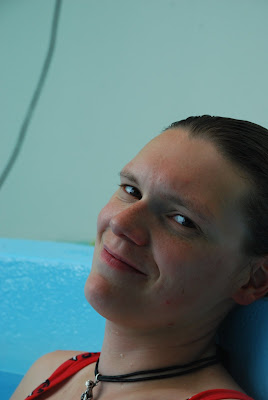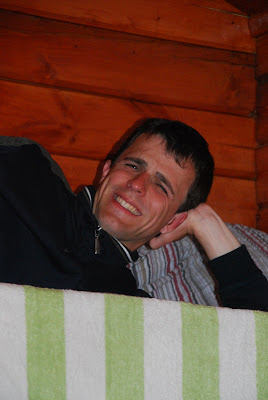Departing from Skógarhólar we turn left and ride northwards alongside Ármanssfell Mountain in the direction of Skjaldbreiður Volcano with Thingvellir National Park to our right. Shortly we arrive at a gate and enter the National Park. We ride through the National Park from north to south down to Lake Thingvallavatn along trails that were used by our ancestors all the way back to the settlement. The National Park covers a lava field that flowed some 9 thousand years ago. As time passed the area has subsided by tens of metres forming a rift valley with innumerable cracks. The rift valley itself is circumscribed by Almannagjá Gorge to the west and Hrafnagjá Gorge to the east. Some of the cracks in between are filled with water. The Lava field is covered with gray moss, ling and birch wood. For many Icelanders Thingvellir is an invaluable national treasure – a “sacred” place that captures the essence of our nationality, cultural heritage and precious nature. On our way we pass Hrauntún and Skógarkot – the remains of deserted farmlands from previous times surrounded by laden walls made of lava rocks. Usually we stop at Skógarkot and rest for a while on the grassy plains there and let the horses eat. As we reach the watershed of Lake Thingvallavatn we turn left and head towards Gjábakki farmland (where we have our lunch) crossing Bæjargjá Gorge on our way shortly before departing from the National Park. Then we continue eastwards alongside Gjábakkavegur road in the direction of Laugarvatn – a tiny village standing by a lake with the same name. Midway between Gjábakki farmland and Laugarvatn village is a cave that was inhabited for a few years in the first decades of the last century. From there we turn south in the direction of Lyngdalsheiði Heath – an old shield volcano – heading for Kringlumýri shack where we spend the night.
– 28 km, 5-6 hours








Day 4: Kringlumýri – Villingavatn (from Stefan)
When departing from Kringlumýri we head west at first and then south in the direction of Lake Thingvallavatn and Lake Úlfljótsvatn. On our way we have a great view of Thingvellir and vicinity surrounded by majestic volcanoes in all directions. Compared to the surface on the tour hitherto the track is soft and comfortable for the horses. The riding is easy and relatively fast. Halfway between Kringulmýri and Villingavatn farm we pass Steingrímsstöð – a Hydroelectric Power Plant driven by a river that runs from Lake Thingvallavatn to Lake Úlfljótsvatn. As we ride along the track leading from Steingrímsstöð to Villingavatn farm we have, in part, a nice view of both lakes simultaneously. The day riding ends at Villingavatn farm where the horses are kept during the night. From there we go by car back to Vellir farm. We spend the rest of the day as we like. For instance, by going to the swimming pool in Hveragerði village – a beautifully located outdoor swimming pool with a natural steam bath and comfortable hot tubs – or by going on shorter sightseeing tours or to arts exhibitions in the vicinity.
– 15 km, 3-4 hours











waterbreak at lake thingvallavatn
When we arrived at Vellir, we went for the pool to wash up..




Day 5: Villingavatn – Reykjadalur – Vellir (from Stefan)
We depart from Villingavatn farm heading south in the direction of Reykjadalur Valley. To the west near Lake Thingvallavatn is Ölfusvatn farmland where Chieftain Grímkell Bjarnason, who was among the settlers of Iceland, built his farm. Shortly we pass the deserted farmhouse at Krókur farm and approach Súlufell Mountain. From there we ride upwards the mountains following a track across Kattartjarnahryggur Ridge. As we ascend a beautiful view over Lake Thingvallavatn and vicinity gradually emerges. In bright weather Mountain Hekla and the glaciers in the south, Eyjafjallajökull and Tindfjallajökull, appear on the horizon to the east as well. On our way we pass Hrómundartindur Peak which is one of two (or three) volcanic systems in the Hengill area and is still active. The track leads to Kattartjarnir Ponds shimmering in blue and grey – these are explosion pits or maars that reach below the groundwater level and are therefore filled with water. We ride by the waterside of the upper Kattartjörn Pond and continue from there towards Reykjadalur Valley passing Álftatjörn Pond and some hot springs at Ölkelduháls Low Ridge on our way.
Old folktales mention so called “hotspring birds” in hotsprings by Ölkelduháls and in Hagavíkurlaugar Pools. They were described as small and dark and believed to be swimming on boiling hot springs. According to the folktales there was no use boiling them, but if they were put into cold water they would taste as if they had been boiled. Shortly we pass Ölkelduhnúkur Peak and approach Klambragil Gully and Fálkaklettar Cliffs that lead us down to Reykjadalur Valley. The valley draws its name from the many hot springs located there. Those who wish can bathe in the valley’s warm rivulet before we leave for Vellir where the tour ends. As we approach Hveragerði riding through Ölfusdalur Valley we pass Leppalúði by the road to Gufudalur Valley, a spouting hot spring or geyser, named after a famous ogre of Icelandic folklore. It spouts constantly to a height of three to four metres. Nearby, close to the opening of Ölfusdalur Valley, is another spouting hot spring, Grýla, named after Leppalúði’s ogress wife. Grýla now erupts only rarely, but at its best it used to spout a column of water to a height of 15 metres. We follow the mountainside of Reykjafjall the last part of the way. From the farm at Vellir we go by car back to Reykjavík.
– 20 km, 4-5 hours



Mystic river?











Poor Stefan and Sofia had to watch to horses when we took our bath

Time to say goodbye..
/Malin

Inga kommentarer:
Skicka en kommentar